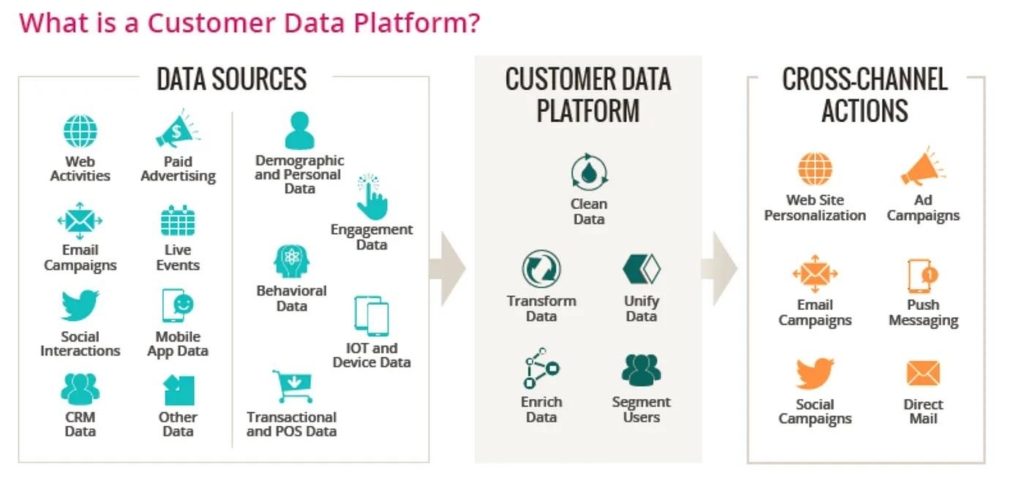What Are the Common Challenges in Interpreting Customer Data Insights?
Customer data insights offer a deep understanding of customer behaviors, preferences, and trends—an important capability in an environment where customers want highly personalized experiences. With data insights in their arsenal, businesses can tailor their strategies to specific audiences and even specific leads in the sales pipeline.
Data insights also play a pivotal role in driving smart decision-making and strategy. By analyzing customer data, businesses can identify patterns and make informed decisions that optimize their marketing efforts, improve product development, and enhance overall operational efficiency.
Still, interpreting customer data insights at scale and in an ongoing way is not without its challenges, and knowing how to remediate them is key. In this guide, we’ll explore these common challenges and provide solutions to ensure seamless data collection, analysis, and strategic application.
Quick Takeaways:
- Interpreting customer data insights is essential for understanding customer behavior and tailoring business strategies effectively.
- Common challenges in data interpretation include data quality issues, integration difficulties, and contextual misunderstandings.
- Effective strategies to overcome these challenges involve regular data audits, using integration tools, and training teams in data literacy.
- Addressing biases in data interpretation is crucial for obtaining objective, actionable insights.
- Ensuring data privacy, closing skill gaps, and effectively communicating insights are vital for leveraging customer data to drive business growth.
What Are Customer Data Insights?
Customer data insights are actionable intelligence derived from analyzing various data points related to customer behavior, preferences, and interactions. As mentioned, they’re crucial for understanding what drives customer decisions and tailoring offerings to better meet customer needs.
Businesses can collect customer data insights from a variety of sources and touchpoints, including:
- Online Interactions: Website visits and social media engagements provide valuable information about customer interests and behaviors.
- Purchase History: Reveals patterns in buying behavior help businesses understand what products or services are most appealing to their customers.
- Social Media Interactions: Social media interactions offer insights into customer sentiments and preferences, as well as the effectiveness of brand communication strategies.
- Customer Service Interactions: Customer service data provides feedback on customer satisfaction and areas needing improvement.
- Feedback Surveys: Surveys are one of the best ways to collect direct responses from customers about their experiences and expectations.
- Loyalty Programs: These programs track and reward brand engagement, giving insights into long-term customer value.
Integrating data from a variety of touchpoints with a customer data platform is essential to gaining a comprehensive view of the customer. This holistic perspective allows businesses to see the complete customer journey, identifying key moments that influence buying decisions.

Without integrating data sources in this way, companies risk having fragmented and incomplete insights, which leads to misguided strategies and missed opportunities. Effective customer data integration ensures that businesses have a unified, accurate understanding of their customers so they can deliver personalized experiences that drive growth and competitive advantage.
7 Challenges in Interpreting Customer Data Insights
The importance of customer data insights is clear, but obtaining and interpreting them comes with a number of challenges that must be addressed. Otherwise, they can interfere with the accuracy and effectiveness of insights derived from your customer data. These include:
- Data Quality Issues
Reliable data quality is vital for accurate insights. Poor data quality can arise from incomplete data, inaccuracies, and inconsistencies, which leads to flawed insights and misguided decisions. Minimize data quality risks by performing regular audits, data cleaning, and validation techniques.
- Data Integration Challenges
Integrating data from many sources is crucial for comprehensive insights, but combining data from disparate systems and platforms can be complex. To remediate this challenge, use automated integration tools (your CRM, for example) to establish a unified platform that standardizes data as it’s collected.
- Skill Gaps and Training Needs
Interpreting customer data insights requires a certain level of skill and experience that not all marketing teams possess. Today, data and analytics are the most common skills gap areas for marketing teams, and this hinders effective customer data utilization.

Effective training, professional development programs, good hiring practices, and leveraging external expertise are all good ways to address skill gaps proactively and enhance your internal data analysis capabilities.
- Overcoming Bias in Data Interpretation
Biases can significantly affect data interpretation and lead to skewed insights. Common biases include:
- Confirmation Bias: Interpreting data in a way that confirms pre-existing beliefs or hypotheses
- Selection Bias: Choosing data samples that are not representative of the entire population
- Cognitive Bias: Personal beliefs or preferences influencing the interpretation of data
Diverse team involvement, using unbiased algorithms, and continuous monitoring are all effective methods to mitigate bias and ensure consistent, objective data analysis.
- Handling Large Volumes of Data
Big data poses challenges in terms of storage, processing, and analysis. Extracting meaningful insights from vast datasets can be difficult. To manage high-volume customer data insights, consider scalable storage solutions, implement big data analytics platform solutions, and employ AI and machine learning for efficient pattern recognition and analysis across large datasets.
- Data Privacy and Security Concerns
Data privacy and security are both critical when handling customer data—in fact, it’s one of the top concerns customers have related to sharing their information. Forbes reports that 86% of Americans are concerned about their personal data privacy, and most don’t understand how their data is being used.

.
Challenges for brands include protecting data while extracting insights and ensuring compliance with regulations throughout the process. Take steps such as data anonymization and encryption to protect customer data, and choose data solutions that automate compliance.
- Communicating Data Insights Effectively
Translating complex data insights into actionable strategies is a significant challenge, but it’s arguably the most important step in leveraging customer data insights. Without communicating insights to business teams for strategic application, your data can’t make an impact. Clear, concise communication as well as effective data storytelling make data more digestible and usable for non-technical teams.
Helpful tactics include visualization tools, simplifying technical jargon, and tailoring data presentations to different audiences to ensure the insights are understood and actionable.
In Conclusion
Customer data insights are essential today for understanding your customers and leveraging your data to enhance strategic marketing decisions. The challenges we covered in this article are important to know and address proactively to ensure your data is complete, accurate, and usable for analysis. With a sharp focus on data quality and management, you can consistently maximize the strategic value of your insights.
If you’re looking for support in building a comprehensive data strategy that delivers high-value insights and drives results, Televerde can help. Our integrated approach to customer journey analytics helps B2B clients across industries meet and exceed performance goals.
Contact our team today to learn more about how we can help you grow.


